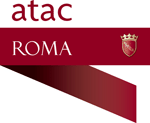
N° 1 January 2020
2020: hi-tech and green
TTS Italia on the most promising trends: logistics 2.0 and MaaS

Technologies and greens seem to be the key words that will characterize 2020. Starting from the green plan from the European Commission which has put 1,000 billion on the plate for the next 10 years, while the digital age is fully included among the 6 priorities announced by Ursula von der Leyer. Even the Budget law passed by the Italian Government aims to enhance the effort to reduce polluting emissions, also linking the innovation of companies and the public administration to the green. The debate on innovation in Italy also takes shape thanks to the Strategic Plan 2025 presented by the new Ministry for Innovation led by Paola Pisano, while the Ministry of Economic Development focuses more and more on the application of the most advanced technologies such as Blockchain, artificial intelligence, 5G and autonomous driving. These themes are fully part of the activity that TTS Italia has planned for this year. The Association, which brings together the largest parterre of companies involved in the development of technologies related to mobility and - through the Platform of local authorities - regions, cities and urban areas increasingly interested in making the leap towards smart mobility, has started a series of actions aimed at exploring the most promising trends, without losing sight of the international panorama in order to study new inputs coming from other countries, but also to give Italian companies the opportunity to compete in new markets.
Among the 2020 objectives, TTS Italia has identified the deepening of two trends in great evolution: the contribution of technological innovation in logistics and the development of MaaS (Mobility as a Service).
The association has in fact just started a working group on ITS in logistics aimed at putting in place the necessary actions to promote intermodality, the use of fleet management systems and legality control up to blockchain and platooning, the system that allows trucks to travel in rows, autonomously guided by a lead vehicle. The working group, coordinated by Clara Ricozzi, an expert in the sector, president of Oita and vice-president of the Freight Leaders Council, is composed of many associations, institutions, local authorities and companies associated with TTS Italia. The working group was born from the indications that TTS Italia summarized in a document presented to the institutions with the aim of finding solutions to the many critical issues that characterize the sector in Italy today.
"Guidelines for the development of MaaS services in Italy" is the title of the working group that the Association recently launched, in which the major sector associations interested in the subject of MaaS are involved along with TTS Italia members.
Further working groups will continue in 2020: "Devices for the detection of road traffic offenses", launched in December 2018 with the aim of following the update of the Ministry of Transport Decree on "Initial and periodic checks of functionality and calibration of the equipment used to ascertain violations of the maximum speed limits, methods of signaling the control stations on the road network ", better known as the Calibration Decree (Ministerial Decree 282). A text that, while filling a technical-regulatory gap, has generated some uncertainty among operators. TTS Italia is working to define a proposal to update the Ministerial Decree 282 in order to support the Ministry in the revision of the legal text. The activities are being finalized and will be completed by next spring. Finally, "ITS for the payment of parking services", is a working group started in May 2019 with the aim of addressing and discussing ITS issues for parking payment. In particular, the "Guidelines for parking management and payment" are being defined with information for the definition of the standardization criteria for the procedures for the collection and flow of data relating to parking.
Another important chapter of TTS Italia's activity in 2020 is that relating to national and international events. For the current year, a series of territorial workshops are planned in collaboration with the Local Authorities that adhere to the Platform, while two conferences will be organized, respectively, for the presentation of the results of the working groups on logistics and MaaS. Five events on which TTS Italia is paying attention. The first appointment is in Turin (1-2 April) for the International Business Convention for innovative vehicle and transportation. April 27-30 will be the turn of Helsinki for the TRA 2020. In Portugal on May 18-20 for the 14th ITS European Congress, while the 17th ITS Asia Pacific Forum will take place in Brisbane (Australia) between 25 and 29 May and in Los Angeles the 27th ITS World Congress from 4 to 8 October.
Finally, it is worth mentioning the activity of TTS Italia in many European projects that will continue throughout 2020. Among the most important, C-Road Italy 2 (urban centers), Fenix (logistics), MyCorridor (MaaS), PriMaaS (MaaS ) and Trustonomy (autonomous driving).

This Month Focus On...
Projects of the month
Product of the month
TTS Italia partners
TTS in action
ITS relevant tenders in Italy
The e-MaaS of myCicero is going to conquer the five continents


With SOLUTIONS+ project, myCicero is the Italian app for the promotion of electric mobility around the world.
SENIGALLIA, Italy - While the funds that the EU makes available to Italian regions for innovation and development projects often are left unused, Italian companies often manage to win international research&innovation projects by discussing and negotiating directly with the various EU Directorates-General in Brussels. 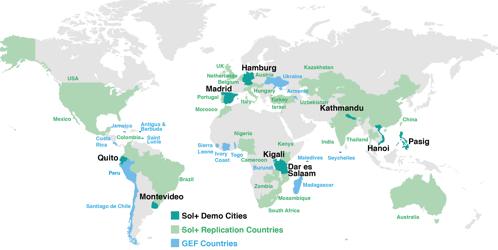 This is what happened last month to Pluservice, an ICT company from Senigallia, known throughout Italy for having conceived and implemented myCicero, the first, and to date the only one, smartphone app able to purchase the mobility services available in every corner of Italy.
This is what happened last month to Pluservice, an ICT company from Senigallia, known throughout Italy for having conceived and implemented myCicero, the first, and to date the only one, smartphone app able to purchase the mobility services available in every corner of Italy.
With myCicero, Pluservice has been ahead of its time, effectively introducing the concept of MaaS, or Mobility as a Service, into its users' habits. This new vision of mobility has earned Pluservice the participation in the international SOLUTIONS+ consortium, which has seen receiving an important European funding for the realization of the homonymous project.
The project intends to identify a universal platform of electric mobility solutions for the public transport (but also last mile commercial transport is considered), which could provide a crucial contribution to the transition towards low-carbon urban mobility.
 In order to get the most out of the project, cities, businesses, research centers and financial partners already strongly committed in such topic were involved in the consortium. Hence the great ambition and the great impact of the project activities, which envisage many regional realizations intended as local replications of a single standard platform that integrates important technological experiences of operators from all over Europe.
In order to get the most out of the project, cities, businesses, research centers and financial partners already strongly committed in such topic were involved in the consortium. Hence the great ambition and the great impact of the project activities, which envisage many regional realizations intended as local replications of a single standard platform that integrates important technological experiences of operators from all over Europe.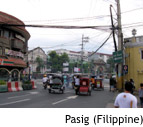
Thanks to these regional platforms, created with local development teams, the project therefore wants to develop a very realistic and innovative approach for urban electric mobility. This is to ensure that the mobility systems and planned interventions, as well as the Paris Agreements on climate change, can also meet the 17 UN Sustainable Development Goals, thus identifying universal guidelines for the development of cities.
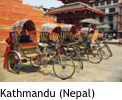 identifying universal guidelines for the development of cities.
identifying universal guidelines for the development of cities.
But let's take a closer look at the numbers of the project.
SOLUTIONS+ can count on a budget of over 20 million euros, of which almost 18 are guaranteed by the EU, and the remaining amount by co-financing by municipalities and financial partners belonging to the consortium. The activities planned by the project begun in January 2020 and will continue for 4 years.
The main peculiarity of the consortium is its global composition: 161 organisations from all five continents, 46 of which are directly involved in carrying out the activities planned in 9 cities, and the others between co-financing entities and municipalities, all interested in replicating the results of the project.
Specifically, Pluservice will receive a budget of over half a million euros, of which almost one hundred thousand allocated for the numerous travels planned for the dissemination of results in various cities around the world.
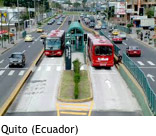 As we said, the general objective of the project is to accelerate the transformation towards sustainable urban mobility through innovative integrated electric mobility solutions. In order to achieve this goal, the project on one hand will increase the number of available electric vehicles and recharging infrastructures, and on the other hand will promote the efficiency of their use by supporting the integration of the different types of electric mobility in large urban areas and responding to the needs of users and according to specific local conditions in Europe, Asia, Africa and Latin America.
As we said, the general objective of the project is to accelerate the transformation towards sustainable urban mobility through innovative integrated electric mobility solutions. In order to achieve this goal, the project on one hand will increase the number of available electric vehicles and recharging infrastructures, and on the other hand will promote the efficiency of their use by supporting the integration of the different types of electric mobility in large urban areas and responding to the needs of users and according to specific local conditions in Europe, Asia, Africa and Latin America.
The used methodology involves:
- The identification of methods and tools that support the development and implementation of electric mobility.
- The realization of demonstrators in different urban realities in four continents, initially with the scope of validating the tools and then supporting their feasibility and reliability in different contexts.
- The design of a structured replication process with the aim of increasing the impact of the project.
The main areas of intervention of the project will be: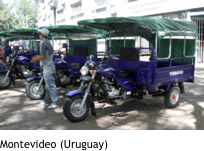
- Electric vehicles
Bus and truck (VOLVO)
Van and car-sharing (FCA / CRF)
2 and 3-wheeler vehicles (Valeo)
- Vehicle components (Valeo)
- Recharging solutions (ABB and TSY)
- integration of energy systems (Dynniq)
- E-MaaS solutions (Pluservice)
- Operation of public transport (UITP).
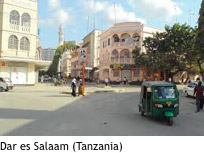 The central role of Pluservice should be underlined, as e-MaaS solutions will be available in all the demonstration actions foreseen in the 9 pilot cities: Madrid and Hamburg in Europe; Hanoi, Kathmandu and Pasig in Asia; Quito and Montevideo in South America; Dar Es Salaam and Kigali in Africa.
The central role of Pluservice should be underlined, as e-MaaS solutions will be available in all the demonstration actions foreseen in the 9 pilot cities: Madrid and Hamburg in Europe; Hanoi, Kathmandu and Pasig in Asia; Quito and Montevideo in South America; Dar Es Salaam and Kigali in Africa.
Pluservice will be responsible for creating multimodal trip planning, payment and ticketing systems, and infomobility for users. Concretely, Pluservice will implement an app to allow the end users to access the e-mobility services offered in the pilot sites that are involved in the demonstrators (including the recharging point). The app will also facilitate the integration of existing mobility services, creating a one-stop shop to access all useful services. The app will thus offer services and useful information to users, for example for the use and payment of e-bikes, e-3 wheels, e-taxis, etc. and to pay for various services.
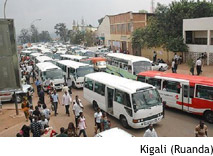 The project plan envisages that Pluservice will take care of the entire implementation of the app for a specific pilot territory, delegating to the respective local partners the replication for any other interested pilot territory. The "master" app will be designed and implemented in such a way as to make it easily configurable with the different services and the various features provided in each pilot.
The project plan envisages that Pluservice will take care of the entire implementation of the app for a specific pilot territory, delegating to the respective local partners the replication for any other interested pilot territory. The "master" app will be designed and implemented in such a way as to make it easily configurable with the different services and the various features provided in each pilot.
The project events scheduled in the various cities where the demonstrators are held, will be the occasion for improving the APPs according to specific local needs, involving local stakeholders and thus initiating potential commercial partnerships.
Another important element thus is added to Pluservice's strategic development plan, in order to allow the Marche-based company to consolidate the market positions acquired during its thirty years of activity, and to keep carrying on the continuous technological innovation, specifically for the B2C segment consisting the platform myCicero.
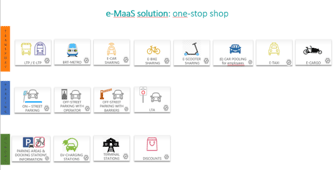
The SNAP project and its lessons-learned

The SNAP (Seamless exchange of multi-modal transport data for transition to National Access Points) project, co-financed by the European Commission through EIT Digital, ended in December 2019.
The SNAP mission was related to support the sharing of interoperable transport data, enabling the definition of new Intelligent Transport Services (ITS). The motivation for the project started from the analysis of the EU Delegated Regulation 2017/1926 that is asking to each EU Member State to set up a National Access Point (NAP) allowing access to static data (e.g., timetables, network topology) and dynamic data (e.g., delays, cancellations) related to different transport modes (air, train, bus, ferry, metro, tram, car/bike-sharing, car-pooling, etc.), defined according to specific standard data formats (e.g., NeTEx CEN/TS16614 and SIRI CEN/TS15531).
SNAP conducted a survey with 52 European transport stakeholders with the following results: (i) the 56% of the respondents declared unfamiliarity with the Regulation, (ii) the requirements of the Regulation in terms of what to share, how and when, are not clear to around 70% of the respondents; (iii) more than 70% of the respondents are either unfamiliar or only slightly familiar with both the NeTEx and SIRI standards; (iv) most of the respondents (65%) are not planning to convert their data to NeTEx (and thus comply with the Regulation) in the short term, while 29% are planning to do so in the next 3-6 months.
SNAP supports the process of compliance to the EU Regulation 2017/1926 providing a market-ready solution that enables transport data conversion to EU-mandated standards. The SNAP Solution has been tested with successful results in three different metropolitan areas (Milano, Madrid, Genova), involving three different transport stakeholders (transport authority, transport operator, and infrastructure manager), and focusing on three different use-cases (conversion from GTFS data to NeTEx, conversion from proprietary data format to NeTEx, enrichment of GTFS data and conversion to NeTEx).
SNAP has been recognized by the involved stakeholders (SEA Aeroporti, AMT-Genova, Consorcio Regional de Transportes de Madrid and EMT-Madrid) as an innovative and convenient solution that addresses a real need for compliance while tackling the main challenges faced by transport stakeholders: an unfamiliarity with the standards requested by the EU Regulation 2017/1926 and a lack of resources to be dedicated to the conversion effort. Moreover, SNAP could be larger in scope. The SNAP solution can be proposed not only to support the compliance with the EU Regulation but, more in general, to address the larger need for interoperability in the transportation industry, providing services for data conversion to various data formats, NeTEx and SIRI included.
Watch the SNAP Solution video: http://bit.ly/2RBrjDh
For more information visit the project website: https://www.snap-project.eu
Marco Comerio (Cefriel, coordinator of the SNAP project) gives more technical details and information on lessons-learned
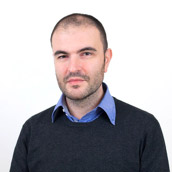
Could you provide more technical details on the SNAP Solution?
SNAP has produced a market-ready solution to support the conversion of transport data to target standard data formats. The SNAP solution supports a two-phases process: the first phase (data preparation) provides technological solution for data collection and harmonisation; the result is a data package ready to be processed in the second phase (data conversion) of the SNAP solution, in which Semantic Web technologies are applied to enrich and convert the data to the target data formats.
Customers may select one or more of the following parts of the SNAP Solution:
- Requirements analysis & compliance assessment, to understand the complexity of converting their data in the desired data format;
- Data preparation services for data collection and harmonization;
- Conversion services for data alignment w.r.t. the Transmodel ontology, enrichment and reshaping to the desired data format;
- Support services, including maintenance, knowledge transfer and training.
Any lesson learned from this interesting project?
The key premise for SNAP was that the introduction of EU Regulation 2017/1926 created a new market opportunity for a product or service that enabled the conversion of transportation data to the EU mandated standards. A second consideration made was that, given that the first deadline by which transport stakeholders are required to allow access to their data in these formats is December 2019, there was also a sense of urgency in making such data compliant. While the first premise was verified during the course of the project, the second one was less so.
The opportunity for SNAP was confirmed through multiple interviews as well as from the interest expressed from participants to the SNAP survey.
For what concerns the urgency with which those impacted by the Regulation are working towards compliance, we found out that most stakeholders do not see it as an immediate need. This because the status of the National Access Points in the majority of European countries is still uncertain: clear guidelines and rules of engagement have not been defined, so most stakeholders expect the current deadlines established by the Regulation to be postponed. Having said that, there is an understanding that the EU requirements will need to be met at some point. This makes the adoption of SNAP to be conservative in the near-term (first half of 2020), but start increasing once the NAP situation starts becoming more clear and formalized.
SHOW project: promoting connected infrastructure as a first step
towards road automation and fully collaborative Traffic Management
 Literature states that operation of a fully automated vehicle will increasingly emphasize not only the role of the vehicle, but also of the environment (i.e. the road and relative ITS infrastructure). Therefore, when autonomous vehicles will be widely operational, not only consumer preferences around car-ownership will transform but also traffic management will need correction. Moreover, with the evolution towards the automated mobility, the precise definition and compliance of the scenarios where the human-machine handover can take place is more and more critical (ref. Operational Design Domain – ODD). Connected infrastructure is playing here a key role, for the design and certification procedures as well as for testing environments that need to be deployed. The connectivity between the infrastructure and the vehicles is necessary also to ensure operational conditions in the transition period which can last for decades, built on a full digitalization of elements and thus on the availability of all relevant static and dynamic information in a digital form. Furthermore, collaborative schemes of traffic management can greatly improve the road network throughput performance exploiting this 2-way communication, then interaction, with single vehicles driving on the road. For this reason, a minimum set of data needs to be shared between vehicle and infrastructure to ensure a seamless travel experience. The collaborative traffic management is the only way to create the conditions for the reliability of the planned travel time, and therefore the connectivity is a prerequisite for the successful automated driving deployment.
Literature states that operation of a fully automated vehicle will increasingly emphasize not only the role of the vehicle, but also of the environment (i.e. the road and relative ITS infrastructure). Therefore, when autonomous vehicles will be widely operational, not only consumer preferences around car-ownership will transform but also traffic management will need correction. Moreover, with the evolution towards the automated mobility, the precise definition and compliance of the scenarios where the human-machine handover can take place is more and more critical (ref. Operational Design Domain – ODD). Connected infrastructure is playing here a key role, for the design and certification procedures as well as for testing environments that need to be deployed. The connectivity between the infrastructure and the vehicles is necessary also to ensure operational conditions in the transition period which can last for decades, built on a full digitalization of elements and thus on the availability of all relevant static and dynamic information in a digital form. Furthermore, collaborative schemes of traffic management can greatly improve the road network throughput performance exploiting this 2-way communication, then interaction, with single vehicles driving on the road. For this reason, a minimum set of data needs to be shared between vehicle and infrastructure to ensure a seamless travel experience. The collaborative traffic management is the only way to create the conditions for the reliability of the planned travel time, and therefore the connectivity is a prerequisite for the successful automated driving deployment.
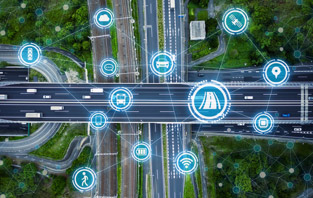 Within this context, SHOW project aims to support the migration path towards affective and persuasive sustainable urban transport through technical solutions, business models and priority scenarios for impact assessment, by deploying shared, connected, electrified fleets of autonomous vehicles in coordinated Public Transport (PT), Demand Responsive Transport (DRT), Mobility as a Service (MaaS) and Logistics as a Service (LaaS) operational chains in real-life urban demonstrations all across Europe.
Within this context, SHOW project aims to support the migration path towards affective and persuasive sustainable urban transport through technical solutions, business models and priority scenarios for impact assessment, by deploying shared, connected, electrified fleets of autonomous vehicles in coordinated Public Transport (PT), Demand Responsive Transport (DRT), Mobility as a Service (MaaS) and Logistics as a Service (LaaS) operational chains in real-life urban demonstrations all across Europe.
By deploying a fleet of 74 autonomous vehicles of Level 4 and Level 5 of all types (buses, shuttles, pods, robo-taxis, automated cars connected with MaaS and cargo vehicles) for all transport operators (passengers, cargo and mixed transport) in both dedicated lanes and mixed traffic, connected to a wide range of supporting infrastructure (5G, G5, IoT, etc.) SHOW aims to satisfy 22 single use cases; that together cover all urban automated mobility needs and wants of the stakeholders as reported in ERTRAC roadmap. Project pilots will last for 24 months, with real service seamless operation in each pilot site lasting at least 12 months and will transport with autonomous vehicle fleets over 1,500,000 passengers and 350,000 units of goods.
WARCO Mizar will explore in SHOW the evolution of road infrastructure and Traffic Management towards Autonomous Driving and will technologically support the Turin Pilot deployment.
Ambiente in Cloud, the first environmental platform for small and medium enterprises.
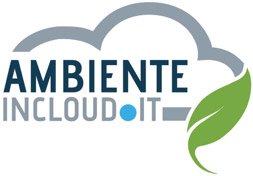 Today Viasat has an increasingly stronger and more defined structure in Waste Management market, thanks to the experience and know-how of Anthea and Datamove (two of the main companies in this sector), creating a Business Unit dedicated to these issues.
Today Viasat has an increasingly stronger and more defined structure in Waste Management market, thanks to the experience and know-how of Anthea and Datamove (two of the main companies in this sector), creating a Business Unit dedicated to these issues.
All the Group has taken on a leading role in this specific area. Since the Waste sector is growing in Europe in an significant way, this market represents a great opportunity for Viasat to be recognized as a reference subject, thanks to an offer of high-performance solutions, advanced services and constant assistance to meet the needs for change and business evolution, maximizing efficiency and competitiveness.
It is precisely within this context that Ambiente in Cloud comes, a Cloud native platform dedicated to manufacturers, transporters, plants and intermediaries for industrial waste management. With Ambiente in Cloud all the activities can be managed via browser or app: enviromental movement, register load/upload, forms, MUD (local declaration) calculation, up to the generation of electronic invoicing to customers.
“Technology and innovation are the basis of the green drive of Viasat Group. Finally there is a special attention to the environment and waste management. The waste market is constantly changing. Ambiente in Cloud represents a revolution in waste management systems: customers are no longer found to purchase server licenses ot to pay for expensive maintenance costs. A pay-per-use formula with online assistance, tailor made services and easy access to our system at any time and from any device” - comments Luca Moretti Head BU Waste Management, Viasat S.p.A.
Furthermore, it is possible to create a real social networking to find skilled professionals, interact with customer and suppliers, share information, reduce business costs and bureaucracy and cooperate with other users.
More Information https://www.ambienteincloud.it/
Geotab achieves unprecedented milestone, surpassing 2 million subscribers
Geotab, a global leader in IoT and connected transportation, and TTS Italia ordinary member, announced it has surpassed 2 million subscribers, securing its position as the world's largest commercial telematics company.
Launching its software as a service solution in 2006, the company has experienced an average annual subscriber growth rate of 40 percent over the past five years, with a 100 percent increase since Q1 2018. Geotab has since become the platform of choice for businesses both large and small as well as public, private and government fleets of all sizes across the globe by focusing on a unique open platform approach that has attracted a world class partner ecosystem and integrated solutions within the Geotab Marketplace.
“In February 2018, we announced that Geotab had achieved its goal of becoming the first telematics company to achieve 1 million connected vehicles built on a single, open platform. In less than two years, we have doubled that number and set a new, unprecedented milestone,” said Geotab CEO Neil Cawse. “As our vehicle subscription base continues to expand around the world, we have showcased that by adhering to our founding adage of ‘you can’t manage what you don’t measure,’ our customers and the community at large are able to benefit from improved fleet management and data-driven insights to help tackle challenges around traffic safety, city planning, climate change and more.”
Geotab’s road to 2 million subscribers at a glance:
Geotab GO devices are used in over 130 countries.
— Geotab’s ecosystem captures nearly 3 million charging events a year from electric vehicles (which is growing rapidly).
— Geotab customers drive an average of 585 million miles per week (that’s equal to 6.3 trips to the sun).
— If all the vehicles in the Geotab database were lined up end-to-end (10,500mi), they would stretch from Toronto to Rio de Janeiro and back.
— More than 40 billion data points are collected each day from Geotab-connected vehicles around the world.
Susan Beardslee, Principal Analyst at ABI Research commended the company on this unprecedented achievement: “ABI Research finds that as of January 2020, Geotab - with more than two million commercial telematics subscribers across the globe - is officially the world's largest commercial telematics company.” ABI Research has been providing leading-edge research via a worldwide team of analysts focused on transformative technologies since 1990.
As a proven leader in IoT and connected transportation, Geotab provides actionable insights to businesses of all sizes in order to help better manage fleets and make data-driven decisions. Geotab’s key industry differentiator is its open platform solution, which promotes a network of cooperation, enabling businesses to integrate Geotab data into any system regardless of business size or operational needs.
“The ‘Connected Car’ revolution is still in its early stages and represents a huge opportunity for the entire ecosystem. Beginning this next decade with such success calls for celebration,” Cawse added. “Thanks to the hard work of our growing network of employees, partners and customers across the globe—whose passion for innovation and focus on sustainability, scalability, reliability and security has enabled us to effectively support over 40,000 businesses and more than 2 million vehicles around the world. We look forward to seeing what the road to 3 million has in store.”
Source: Geotab
Iveco wins tender for buses supply
Iveco, TTS Italia ordinary member, has won the tender issued by ACaMIR, Campania agency for mobility, for the supply of 125 buses to be used for the local transport service.
Source: TTS Italia
Project Automation wins tenders in Tuscany and Milan
Project Automation, TTS Italia ordinary member, was awarded the tender issued by the Tuscany Regional Environmental Protection Agency for the management and maintenance of the Tuscany regional air quality measurement network as well as integrated services, for a duration of 5 years.
In addition, Project Automation, together with Bellesia Romano & Gianni Srl, was awarded the tender launched by the Municipality of Milan for the supply and installation of the control system through the completion of the electronic gates for the accesses to the newly created limited traffic zone «Low emission zone "(Area B).
Source: TTS Italia
Roma: a renewed car sharing service through new collaborations
The car sharing of Roma Capitale changes its face to get closer and closer to citizens. From 16 December new tools are available: a new App, a new Web page, a unique number for needs and reservations. The renewal of the car sharing service was made possible also thanks to the collaborations with Targa Telematics and Almaviva, respectively founding member and ordinary member of TTS Italia.
"Services such as car sharing play a fundamental role in the development of the mobility of the future, a shared and sustainable mobility. Thanks to the new App, it will be easier for everyone to use this service that we want to make more and more accessible ", declares the councilor for the city mobility, Pietro Calabrese.
"We are relaunching and improving an important service for the community, an additional alternative to the private car", says the president of the Mobility Commission of Roma Capitale, Enrico Stefa'no. "Roma Servizi per Mobilita" - says the president and CEO of the company, Stefano Brinchi - confirms its constant commitment to the development of the shared car. Over the years, often facing and overcoming various difficulties, we have worked to extend the service more and more in the municipal area. The new app will make it even more handy. "
Source: Romadailynew
Scania: new LNG vehicles in Barilla to reduce polluting emissions from road transport
Barilla presented the new fleet of LNG vehicles Scania, TTS Italia ordinary member, by Nicolosi Trasporti, its own transport supplier for Sicily. These are vehicles that are characterized by a significant reduction in carbon dioxide and nitrogen oxide emissions compared to the more modern Euro 6 diesel heavy-duty vehicles. Barilla, Scania and Nicolosi Trasporti thus confirm their commitment to create a more efficient and sustainable transport and logistics system.
The vehicles will be used to transport the finished product from the Barilla plant warehouses in Italy to its customers and to its own distribution hub in Sicily, a particularly important region in terms of absorption of the group's sales volumes (8% of the total).
LNG vehicles allow to reduce not only carbon dioxide emissions, but also other polluting agents such as nitrogen oxides, particulates and carbon monoxide deriving from transport. Liquefied methane, as regards medium and long-haul routes, represents an extremely interesting solution for the Italian market, not only for its reduced environmental impact but also for the constant development of the network of refueling stations we are witnessing in Italy.
The Scania LNG vehicles purchased by Nicolosi Trasporti through Covin, the Scania dealership for Sicily, are equipped with a 13-liter natural gas engine, with a torque of 2,000 Nm and 410 horsepower. These are vehicles designed for long-distance missions, thanks to an autonomy of up to 1,100 km and performance comparable to a diesel engine of equal power. The perfect calibration of the transmission developed in-house and controlled by the 5th generation Opticruise, further contributes to the reduction of consumption, without penalizing vehicle productivity levels. A further strength that distinguishes natural gas vehicles is their reduced noise. In fact, the latest generation Scania satisfy the conditions set by the Piek QuietTRUCK standard, with a sound level lower than 72dbA.
Source: Scania
Viasat focuses on Greentech
Last December the merger by incorporation into the company Viasat S.p.A., TTS Italia ordinary member, of the Anthea and Datamove companies, both controlled by the Viasat Group holding, ended. A technological and commercial integration that falls within the framework of the Group's industrial and strategic design, aimed at giving a strong acceleration on the fastest growing markets.
In particular, the merger completes the business chain in the Waste Management area, thanks to the important know-how of Anthea, specialized in the development of solutions for the integrated management of environmental services, of Datamove, expert in the development of advanced systems for fleet management and waste measurement in urban hygiene, and Viasat as a player in the telematic and IoT services market. Therefore, a leading role for Viasat in a market, such as the Waste Management market, which is growing in Europe with extremely significant margins.
"For Viasat this area represents a great opportunity to be recognized as a reference subject within the market", explains Domenico Petrone, President of Viasat Group, "being able to guarantee advanced solutions and services, constant assistance with highly experienced resources, to respond to the continuous needs of business change and evolution, maximizing efficiency and competitiveness ".
"The Waste market is going through a phase of transition towards punctual pricing and Datamove brings with it one of the most advanced platforms in the urban hygiene sector, in terms of measurement, now merged into the new WMS suite - Waste Management Solutions" comments Luca Moretti, Head of the Viasat BU Waste Management. “Together with the Anthea ERP platform it represents a great opportunity for the Group in the Waste Management sector. In this perspective, the merger represents an important opportunity also for our customers, as Viasat aims to grow also through further acquisitions to export the model throughout Europe, where it is already present through the Group's subsidiaries ".
"The vision at the Group level certainly goes beyond national borders" concludes Gianni Barzaghi, Head of the Viasat BU Fleet. "We have a model that has an important impact on the world of waste management in Italy and that we intend to export to compete in European markets with innovative development capabilities, operational flexibility and technological synergies that can enhance and further develop the Group's typical businesses, especially in the Fleet sphere”.
Furthermore, by the end of the year, other operations will be completed that aim to favor the positioning of Viasat in Italy as a "one smart company" with a core business strongly focused on technological solutions and services for the Transport & Logistics, Waste Management sectors, Insurtech and, more generally, of Smart Cities.
Source: Viasat
Innovation and freight transport: the interview to TTS Italia President
According to a survey conducted by the consultancy firm Strategy&, technological innovations will allow freight transport companies to significantly reduce their management costs thanks to the use of new technologies. In short, the innovative road haulage seems to, in a few years, outperform the traditional one. Rossella Panero, President of TTS Italia, talks about it in the interview with "Fleet Safety Guide".
Read the article, here (available only in Italian)
WEBINAR on the Delegated Regulation 2017/1926 - Results of the SNAP project
On 23 January 2020, TTS Italia organized a webinar on the theme of the conversion of transport data into the standards required (NeTEx, SIRI) by the European Regulation 2017/1926 to support operators and managers of transport infrastructures who can make their interoperable and standards compliant data. The webinar was organized as part of SNAP (Seamless exchange of multi-modal transport data for transition to National Access Points), a one-year project (January 2019 - December 2019), coordinated by Cefriel, and co-funded by the European Commission through EIT Digital, in which TTS Italia supported Engineering Ingegneria Informatica SpA, ordinary partner of TTS Italia and partner of the SNAP project.
In particular, the webinar dealt with:
- resume the contents of the European Delegated Regulation 2017/1926 (TTS Italia)
- inform about the activities carried out by Italy on the NAP and in general on the 2017/1926 Regulation (Ministry of Infrastructure and Transport)
- present the final results of the SNAP (Cefriel) project.
For all the relevant tenders click here
• Italia-Milano: Devices for road traffic control
• Italia-Rometta: Services for parking area management
388, Flaminia street 00196 Rome
|
TTS Italia informs that data are used in the respect of the
GDPR 2016/679
Click here for further information.
